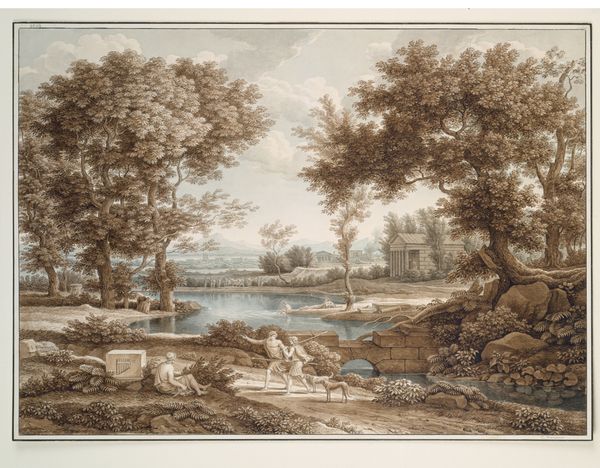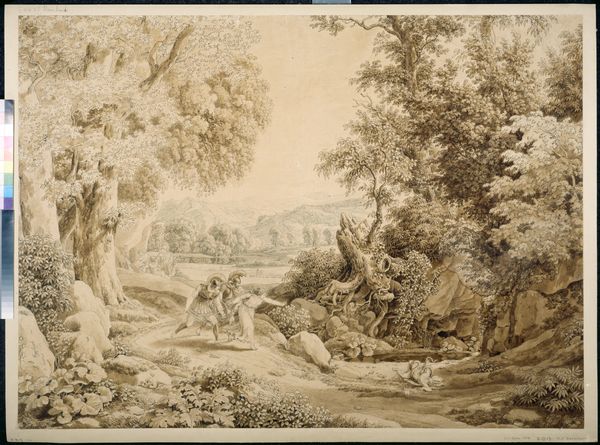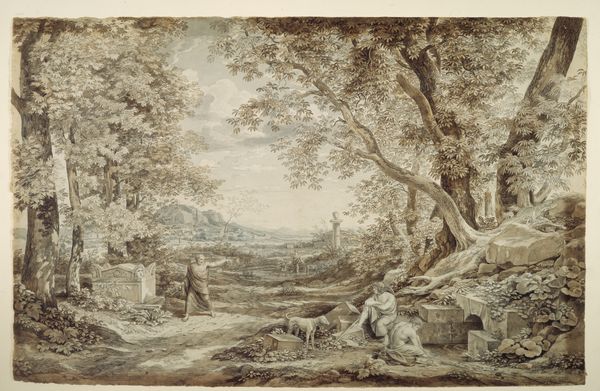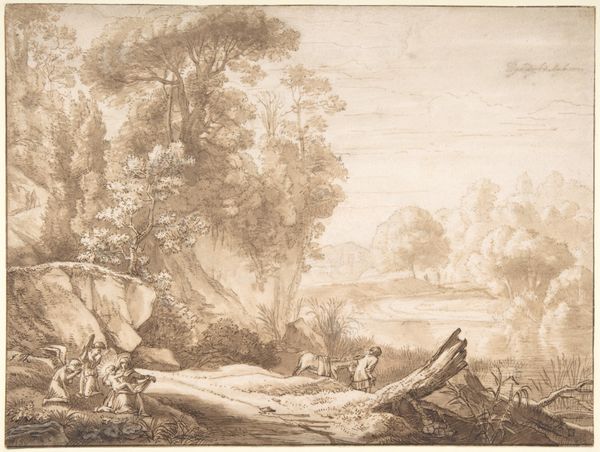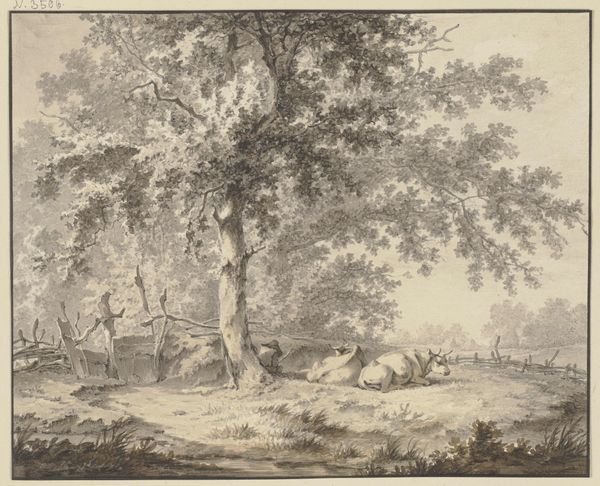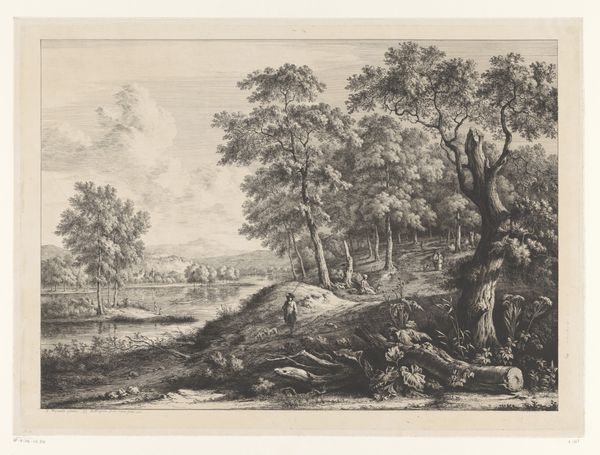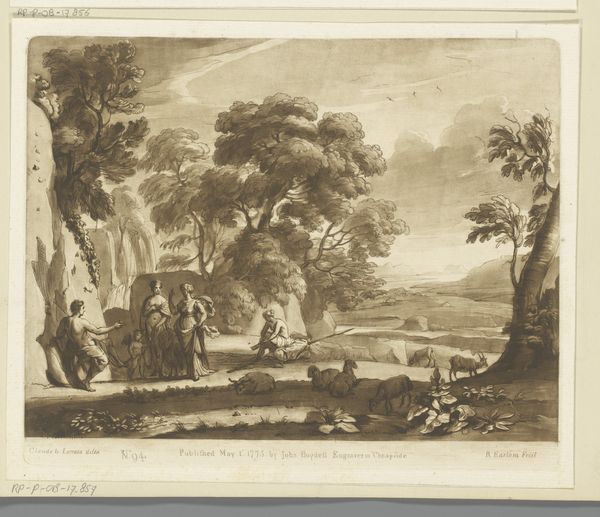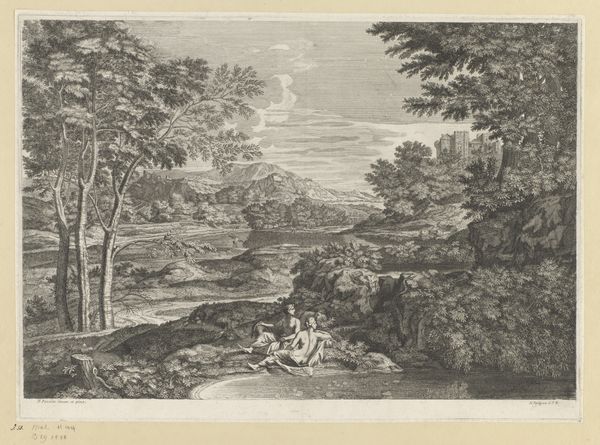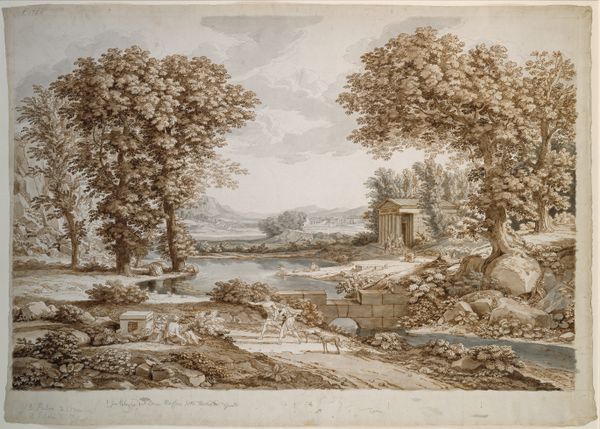
drawing, paper, ink, indian-ink
#
drawing
#
landscape
#
paper
#
ink
#
classicism
#
indian-ink
#
romanticism
#
history-painting
Copyright: Public Domain
Curator: Here, in the Städel Museum, we see Johann Christian Reinhart’s "Landscape with the Victims of Cain and Abel," crafted around 1798 using ink and wash on paper. It's incredibly evocative, but somewhat unsettling with the crime being committed in an otherwise very peaceful landscape. How do you interpret the symbolism in the materials chosen and the way they're applied? Editor: I see the obvious thematic tension between violence and serenity, and also the classical versus the romantic in style. I wonder what the effect is of choosing the starkness of ink, instead of richer materials like paint? And drawing specifically, rather than say etching, which offers a repeatable image? Curator: Exactly! Consider the historical context: Reinhart lived during a period of significant social upheaval, including the rise of industrial production and its alienating effect on labor. The deliberate choice of ink, a relatively simple and readily available material, combined with the personal touch of drawing, speaks volumes. Is Reinhart perhaps making a statement about the accessibility of art creation or lamenting a lost connection to more organic forms of labor, given the content is itself about murder? Editor: So you're suggesting that the very *act* of creating this piece, with these specific materials, is a form of commentary on broader societal shifts? Is it critiquing emerging industrial methods through its conscious material limitations? Curator: Precisely. Look at the use of indian ink, the paper, the rapid way these media can record a scene or impression. The materiality of the work echoes a kind of historical recall, connecting back to much older methods. What impact does Reinhart hope to have on his patrons or viewers by taking on this connection to pre-industrial labour, and how does this potentially frame the moralistic depiction of fratricide on view? Editor: That's fascinating, thinking about materials not just aesthetically but also socio-economically. It changes the way I look at the entire composition, considering labor as an act, as an intentional decision. Thanks, I never would have picked that up by myself. Curator: It’s about looking beyond the immediate image and examining the means by which it was brought into existence! Now think about what messages different materials themselves evoke, and what an artist might suggest with them.
Comments
No comments
Be the first to comment and join the conversation on the ultimate creative platform.
